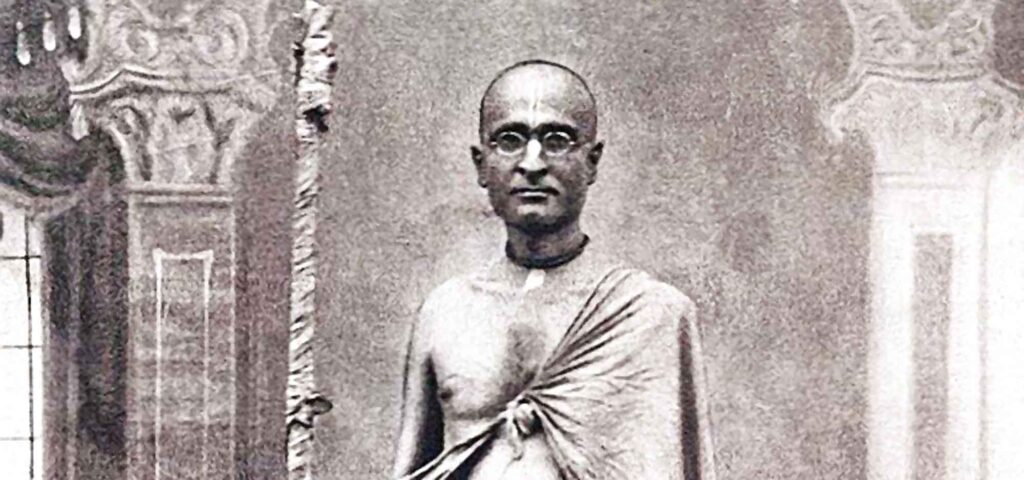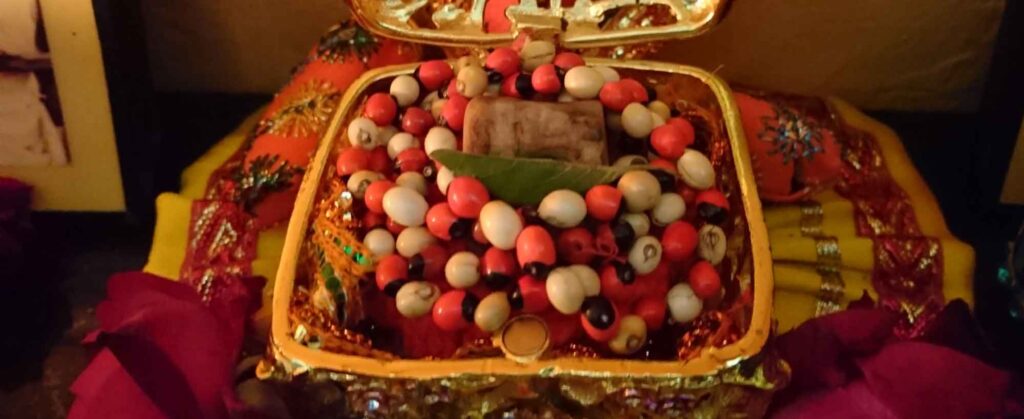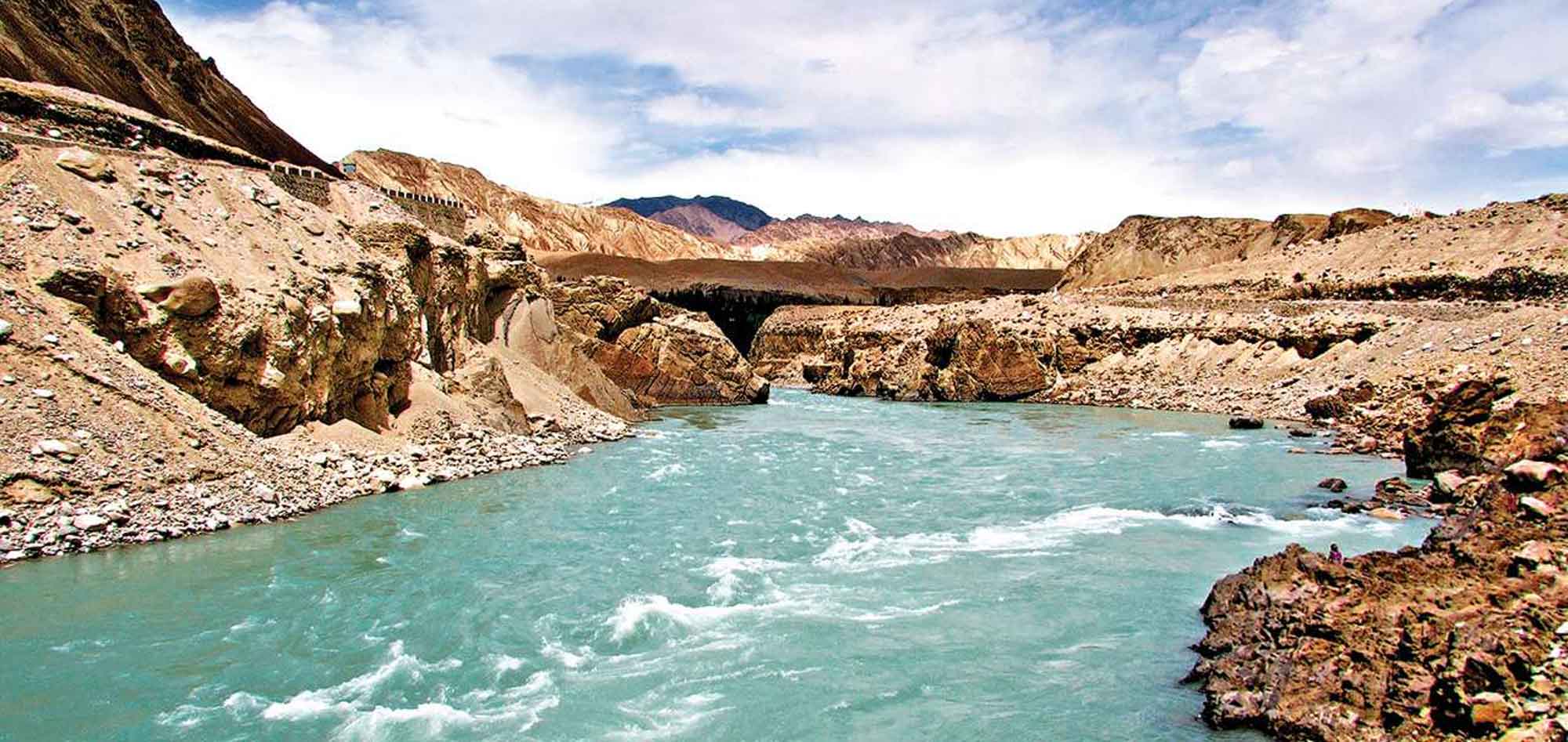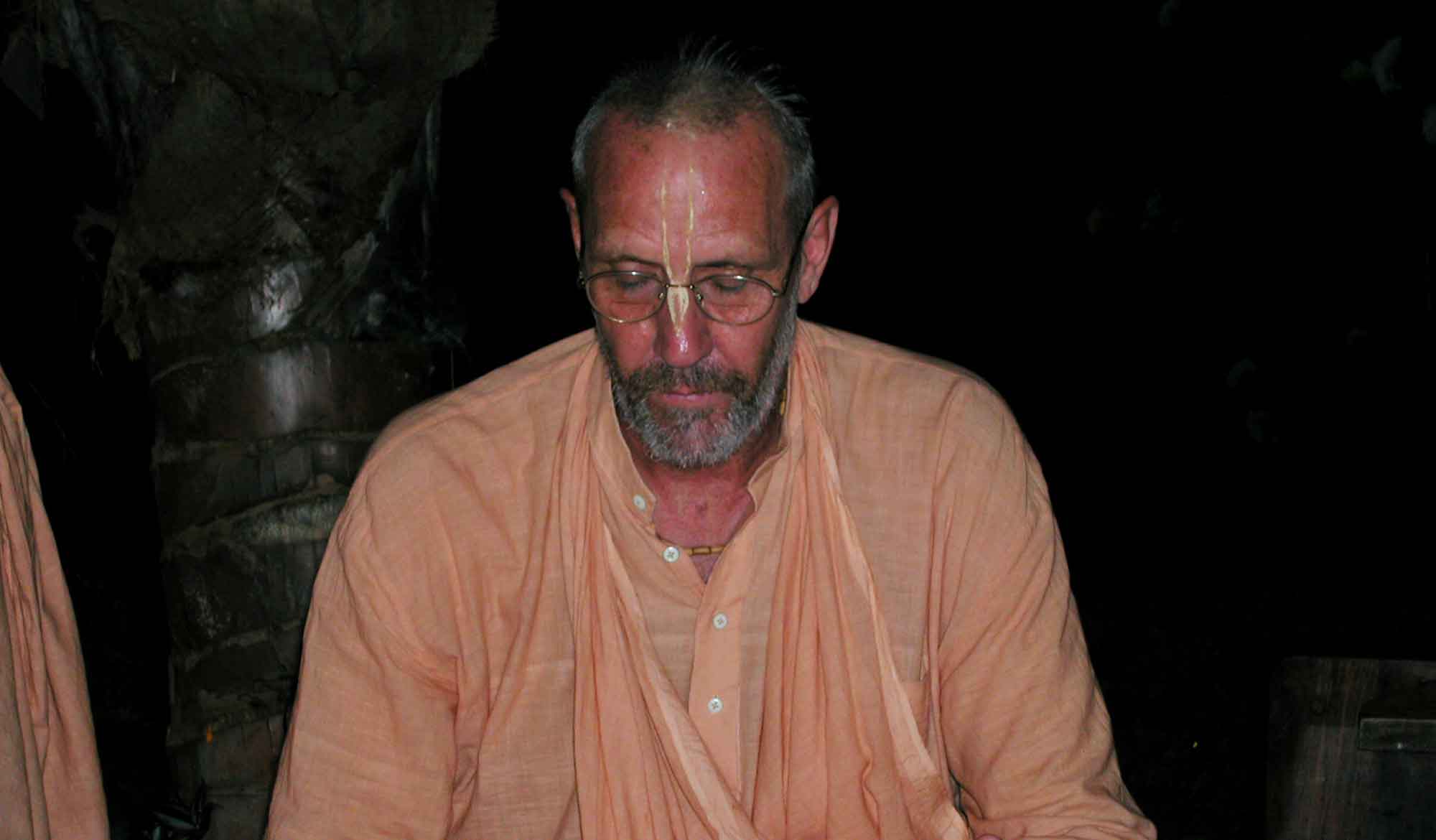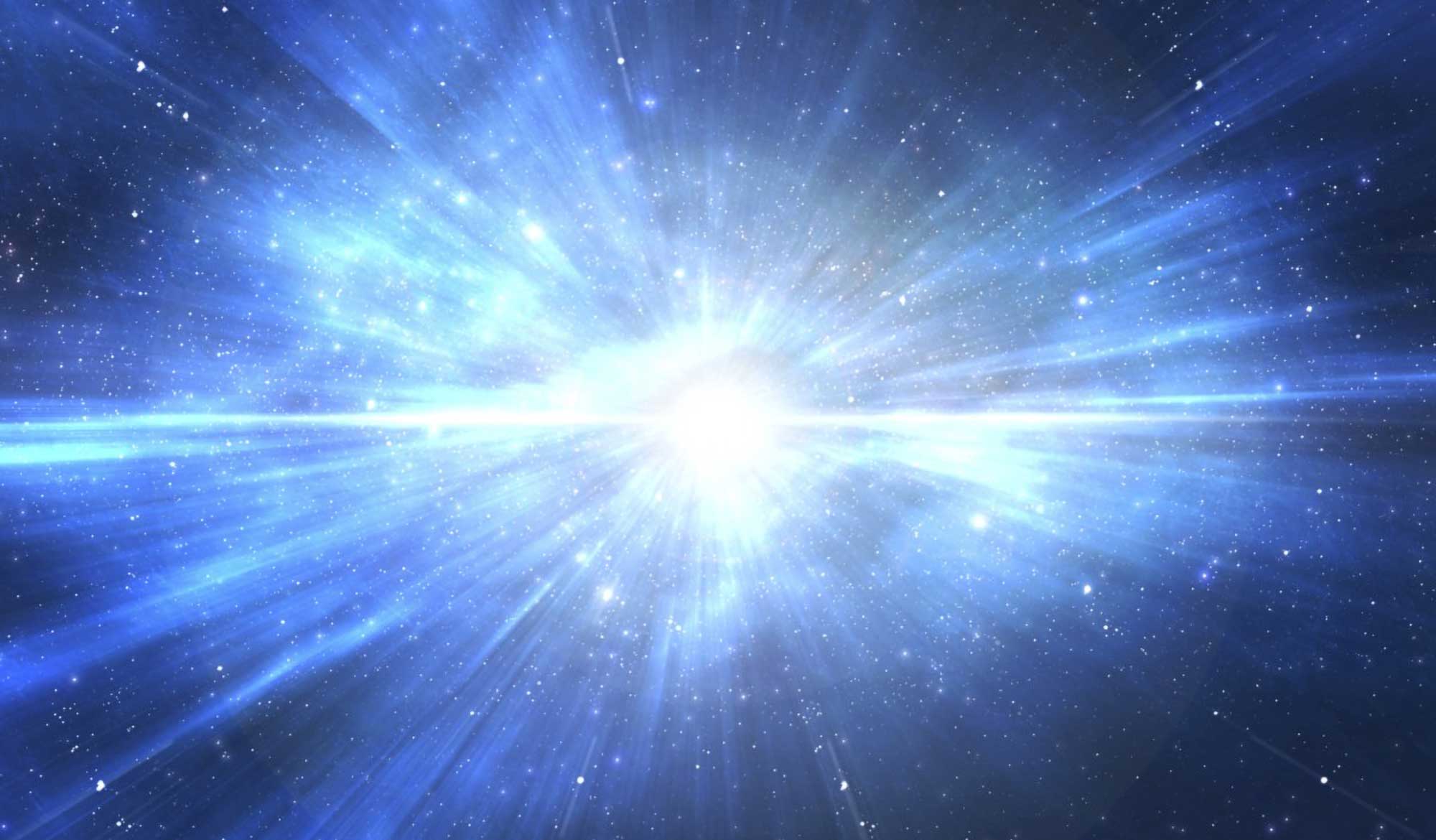by Swami B.G. Narasingha
‘The Worship of Gaura-Gadādhara’ was written by Swami B.G. Narasingha on May 21st 2005. Swami Narasingha explores the importance of the worship of Gaura-Gadādhara in our sampradāya and especially in the line of Bhaktivinoda Ṭhākura and Sarasvatī Ṭhākura.
Question: I have seen on your website that you are worshiping Gaura-Gadādhara at your āśrama. Why are you worshiping Gaura-Gadādhara rather than Gaura-Nitāi?
Answer: We are also worshipping Gaura-Nitāi at our āśrama in a separate temple. However, your question was once asked to Śrīla Bhakti Pramoda Purī Gosvāmī to which he replied, “If you do not worship Gaura-Gadādhara then you cannot understand Rādhā and Kṛṣṇa.”
In essence, it is as straightforward as that – without approaching Rādhā and Kṛṣṇa through gaura-līlā we will be baffled in our attempt.
There is no difference between Rādhā-Kṛṣṇa and Gaura-Gadādhara. Gaura-Gadādhara and Rādhā-Kṛṣṇa are identical and have descended to teach the mellow of saṅkīrtana-rasa, mādhurya-rasa. Through caitanya-līlā we can approach the lake of the sweetest nectar.
kṛṣṇa-līlā amṛta-sāra, tāra śata śata dhāra,
daśa-dike vahe yāhā haite
se caitanya-līlā haya, sarovara akṣaya,
mano-haṁsa carāha’ tāhāte
“The pastimes of Kṛṣṇa are the quintessence of all divine nectar, and caitanya-līlā is an inexhaustible lake of that nectar which, flowing in hundreds of streams, floods the hearts of the devotees in all directions. Therefore, O nectar-seeking friend, please let your mind swim in that lake like a regal swan.” (C.c. Madhya-līlā 25.271)
Śrīla Bhaktivinoda Ṭhākura says,
bhāle gorā-gadādharera ārati nehāri
nadīyā-pūraba-bhāve jāu bolihāri
“As I behold the wondrous ārati of my Lords Gaura and Gadādhara, I enter into the mood of Their existence previous to appearing in Nadīyā (Their vṛndāvana-līlā as Śrī Śrī Rādhā-Mādhava). It is simply indescribable.”
At his place of bhajana in Godrumadvīpa known as Svānanda Sukhada-kuñja, Bhakivinoda Ṭhākura installed beautiful Deities of Śrī Śrī Gaura-Gadādhara and composed these beautiful prayers.
hā hā mora gaura kiśora
kabe dayā kari śrī godruma vane,
dekhā dibe mana cora
“Oh, my most youthful Lord Gaura-kiśora! When will You be merciful and show Yourself to me, thus stealing my mind within the forest of Godruma?”
svānanda sukhada kuñjera bhitare,
gadādhare vāme kari
kāñcana varaṇa cāñcara cikure,
naṭana suveśa dhari
“Within the grove of Svānanda-sukhada-kuñja, You stand with Śrī Gadādhara on Your left side, radiating the effulgence of pure gold. With beautiful curling hair, You are wearing the fine dress of a dramatic actor.”
dekhite dekhite śrī rādhā-mādhava,
rūpete karibe ālā
sakhī gaṇa saṅge karibe naṭana,
galete mohana mālā
“In an instant Śrī Śrī Rādhā-Mādhava will appear and brilliantly illuminate the entire scene. Accompanied by all of Their confidential friends and associates, They will dance with Their necks decorated with various types of golden necklaces.”
anaṅga mañjarī sadaya haiyā,
ei dāsī karete dhari
duhā nivedibe duhāra mādhurī,
heriba nayana bhari
“The merciful Anaṅga Mañjarī, catching the hands of this maidservant, will take me to offer me in devotion unto Śrī Śrī Rādhā-Mādhava, and my eyes will be brimming with pleasure to behold the beauty and sweetness of Them both.”
When completing the compilation of Bhāgavata Arka Marīci-mālā, Bhaktivinoda also expressed his vision of Gaura-Gadādhara and Rādhā-Mādhava as follows:
“The garland of verses from Śrīmad Bhāgavatam sewn by Bhaktivinoda, who is always absorbed in ecstatic love for Śrī Gaura and Gadādhara, is now complete. Those devotees who blissfully relish this book daily will certainly obtain the mercy of Śrī Rādhā-Mādhava. Śrī Rādhā-Mādhava have appeared in Śrī Navadvīpa in Gauda-maṇḍala along with Their abode Vraja, as Śrī Gadādhara-Gaurāṅga, and They have performed Their eternal pastimes in a different manner.”
Why should we give so much consideration to the words of Bhaktivinoda? Because we are in the paramparā of Bhaktivinoda. We are ‘Bhaktivinoda-parivāra’ (members of the transcendental family of Bhaktivinoda, Kamala Mañjarī). Therefore, we take his words as supreme guidance. Bhaktivinoda Ṭhākura appeared in this world to reveal the place of Śrī Caitanya’s appearance and to teach us the most effective mood of worship in gaura-līlā.
Some people claim to be rāgānugas (followers of the path of spontaneous love) and others claim to be rūpānugas (followers of Śrīla Rūpa Gosvāmī) but in this day and age that is not enough. If you are not a follower of Bhaktivinoda, if you have not placed your head at his divine lotus feet and begged to be admitted as a member of his clan, then you are nowhere!
The position of Bhaktivinoda Ṭhākura is so exulted that at the end of his commentary on Caitanya-caritāmṛta, Śrīla Bhaktisiddhānta wrote that he saw Bhaktivinoda as Gadādhara Paṇḍita. It may be inconceivable to our tiny brains how such transcendental arrangements are possible, but the deep thinking devotees know that such divine wonders are possible by the grace of the Lord.
Śrīla B.R. Śrīdhara Deva Gosvāmī Mahārāja spoke of this as follows in Follow the Angels.
“In another place he (Bhaktisiddhānta) wrote that the eternal pastimes are always going on in Navadvīpa-dhāma. Sometimes they are underground, invisible to us, and sometimes on the surface. Nitya-līlā always is invisible to us. Now, suddenly, these two personalities have come to the surface, Gadādhara Paṇḍita and Svarūpa Dāmodara. Both have come. Svarūpa Dāmodara came as Gaura Kiśora and Gadādhara Paṇḍita came as Bhaktivinoda Ṭhākura. This is not to be given expression in any and every place. This is concealed truth, not to be expressed everywhere and anywhere. This is the fact: they are always here, continuing their own function, their participation in the līlā of Gaurāṅga. Sometimes it is underground, sometimes over-ground, but it is always difficult to recognise them.
Prabhupāda wrote, ‘I suddenly found Svarūpa Dāmodara as Gaura-kiśora, and Gadādhara Paṇḍita as Bhaktivinoda Ṭhākura — they most graciously gave me that sort of vision. I could see them as two parsadas, the eternal companions of Gaurāṅga. I found that.’”
It is mentioned in the conclusion to his Caitanya-caritāmṛta Anubhāṣya, “‘Here, in Navadvīpa-dhama, the eternal pastimes are going on continuously; only those who have got that deep vision can perceive it.’
gadādhara-mitra-vara, śrī-svarūpa-dāmodara
sadā kāla gaura-kṛṣṇa yaje
jagatera dekhi’ kleśa, dhariyā bhikṣuka-veśa
aharahaḥ kṛṣṇa-nāma bhaje
śrī-gaura kṛpāya dui, mahimā ki kaba mui
aprākṛta-pāriṣada-kathā
prakaṭa ha-iyā seve, kṛṣṇa-gaurābhinna-deve
aprakāśya kathā yathā tathā
Prabhupāda says, ‘It is very difficult to perceive the sweet will of Śrī Gaurāṅga, but if we can lift ourselves to that level, we see that Svarūpa Dāmodara Gosvāmī and Śrī Gadādhara Paṇḍita are always engaged in their service here in Navadvīpa. Sometimes it is suppressed and sometimes it is appearing on the surface. In that plane all is going on by the sweet will of Śrī Gaurāṅga, without any restriction. But now I find that those two have appeared on the surface as Śrīla Gaura Kiśora Dāsa Bābājī and Śrīla Bhaktivinoda Ṭhākura. I have seen it with my own eye of divine service. But this is not to be advertised, not to be given publicity anywhere and everywhere; people will laugh at it. But this is my heartfelt conclusion.’ (Follow the Angels, Ch.3)
When Śrī Caitanya Mahāprabhu descends He does so with His associates, the Pañca-Tattva and others. Together they teach the fallen souls how to perform pure devotional service to the divine couple in five transcendental mellows culminating in mādhurya-rasa.
Śrī Caitanya Mahāprabhu is Kṛṣṇa Himself, concealed with the lustre and mood of Śrīmati Rādhārāṇī – Mahāprabhu śrī caitanya rādhā-kṛṣṇa nahe anya. With the lustre and mood of the supreme lover of Kṛṣṇa, Vṛndāvana-candra has appeared to taste the transcendental mellows of His own sweet devotional service.
Although Śrī Caitanya Mahāprabhu is Kṛṣṇa Himself, He should not be confused as Navadvīpa-nāgara, a paramour or an enjoyer. Those who are malajusted and make the mistake of considering Mahāprabhu as an enjoyer are mixing incompatible mellows and are thus committing a great offence. Their devotional service is thus ruined.
In the Pañca-Tattva to the right of Mahāprabhu is Nityānanda who is non-different from Baladeva. Śrī Baladeva is the origin of the guru-tattva for the rasas of śānta-rasa, dāsya-rasa, sakhya-rasa, and vātsalya-rasa. Thus in gaura-līlā, Nityānanda Prabhu heads the guru-varga of those devotees absorbed in śānta, dāsya, sakhya, and vātsalya-rasas.
To the left of Mahāprabhu is Gadādhara Paṇḍita who is non-different from Rādhārāṇī. Śrīmatī Rādhārāṇī is the origin of the guru-tattva in mādhurya-rasa. Thus in gaura-līlā, Gadādhara Paṇḍita heads the guru-varga of those devotees absorbed in the mellow sweetness of mādhurya-rasa.
If you are chanting the Pañca-Tattva mantra or worshipping the Deities of Pañca-Tattva then you are also worshipping Gaura-Gadādhara, but you are most probably doing that without any specific focus or attention. In other words you are doing so indirectly or in general.
Gadādhara Paṇḍita has the greatest love for Mahāprabhu. His love for Mahāprabhu is categorically greater than even that of Nityānanda or Advaita Ācārya. And how could it be otherwise? He is non-different from Rādhārāṇī, the greatest lover of Kṛṣṇa. Śrīla Bhaktisiddhānta Sarasvatī Ṭhākura comments in this regard as follows:
“Śrī Gadādhara Paṇḍita Gosvāmī was the foremost amongst Mahāprabhu’s intimate devotees. As he is the origin of the śakti-tattva, he was present in the Lord’s pastimes at both Navadvīpa and Nīlācala. He lived first in Navadvīpa, and later he lived as a kṣetra-sannyāsī in a sub-forest near the ocean at Nīlācala. The pure devotees who worship the sweet feature of Śrī Śrī Radha-Govinda take shelter of Gadādhara and thus become known as intimate devotees of Śrī Gaura. Those who are not enthusiastic to worship the sweet feature of the Lord perform devotional service under the shelter of Nityānanda Prabhu.” (Caitanya-bhāgavata, Ādi-khaṇḍa 2.2, Purport)
When Śrī Caitanya Mahāprabhu is worshipped on the path of arcana-mārga He is worshipped along with Viṣṇupriyā but when he is worshipped on the path of bhajana-mārga He is worshipped along with Gadādhara Paṇḍita. Gaura-Viṣṇupriyā means Śrī Caitanya as Gaura-Nārāyaṇa and Viṣṇupriyā as Bhū Devī (consort of Nārāyaṇa). In the spontaneous stage of bhajana Lord Gaurāṅga and Gadādhara Paṇḍita are worshiped in rāga-mārga – Gaurāṅga as Mādhava and Gadādhara as Rādhārāṇī. This is also confirmed in Jaiva Dharma, Chapter 14.
Arcana, or Deity worship, is in and of itself not considered by our ācāryas as bhajana. This is no doubt a subtle topic but we must endeavour nonetheless to have some proper understanding of it. Arcana is considered a practice of vaidhi-bhakti wherein one’s devotional service is regulated by rules and regulations while one’s mood is in awe and reverence. At this stage the worshipper still has attraction for aiśvarya (opulence) and rituals such as performing mudras and yajñas (fire sacrifices), etc.
Bhajana however is a stage of bhakti or devotional service that transcends worship. It is difficult to find a single English word equivalent to bhajana. Simply to substitute the word worship for bhajana will not suffice.
Bhajana is considered to be rāgānuga-bhakti or the process of expressing one’s natural spontaneous love for the supreme object of love, Śrī Kṛṣṇa. In such a stage of pure devotional love one transcends rules and regulations in favour of spontaneous affection to which opulence and rituals fall by the wayside. In such a stage awe and reverence also vanish and one knows the object of love as one’s dear-most.
When the higher devotee installs a Deity and performs Deity worship then that is also bhajana, but generally speaking bhajana means chanting the Holy Name. When advanced sentiments of love of God manifest in a devotee who always chants the name of Kṛṣṇa with love, such a devotee is said to be performing bhajana.
In other words, bhajana is not just anyone’s chanting of the Holy Name. Bhajana is a stage of affection for Kṛṣṇa that is achieved through pure chanting.
The solace for the neophyte devotees is that we should always think that, “my guru is worshipping the Deity and I am simply assisting”. If we think in this way then our progress is guaranteed.
The worship of Gaura-Nitāi has for many devotees become synonymous with saṅkīrtana-līlā and this is rightly so. But saṅkīrtana may be performed in either vaidhi-bhakti or in rāgānuga-bhakti depending on the stage of one’s advancement. In fact, one may worship Gaura-Nitāi and perform saṅkīrtana simply as a matter of yuga-dharma (duty) or one may perform saṅkīrtana in the mood of prema–dharma (the religion based on divine love). Gaura-Gadādhara however are only worshipped in the mood of prema-dharma.
Sometimes a neophyte devotee rejects or even ridicules the worship of Gaura-Nitāi thinking that he should only be engaged in the highest type of service, the worship of Gaura- Gadādhara. Such a mentality falls short of the proper siddhānta and is certainly hellish. In reality both Gaura-Nitāi and Gaura-Gadādhara are worshipped by the pure devotees.
gadādhara-devera saṅkalpa ei-rūpa
nityānanda-nindakera nā dekhena mukha
“This is the vow of Gadādhara: he would never see the face of one who offends Nityānanda.”
nityānanda-svarūpere prīti yāra nāñi
dekhā o nā dena tāre paṇḍita-gosāñi
“Gadādhara Paṇḍita would avoid being seen by anyone who has no love for Nityānanda Svarūpa.(Caitanya-bhāgavata, Antya-khaṇḍa 124-125)
gadādhara śubha-dṛṣṭi karena yāhāre
se jānite pāre nityānanda-svarūpere
“Whoever receives the merciful glance of Gadādhara can know Nityānanda Svarūpa.”
nityānanda-svarūpo yāhāre prīta mane
laoyāyena gadādhara jāne se-i jane
“And whoever Nityānanda is pleased with can know Śrī Gadādhara.” (Caitanya-bhāgavata, Antya-khaṇḍa 7, 161-162)
The first Deities of Gaura-Gadādhara to be installed in a temple can be found at Cāmpāhāṭī in West Bengal not far from Śrīdhāma Māyāpura. This temple of Gaura-Gadādhara was established by Vāṇīnātha Vipra a devotee of Śrī Caitanya. In the beginning of the 20th century Śrīla Bhaktisiddhānta Sarasvatī Ṭhākura had this temple renovated and revived the service of the Deity.
Other Deities of Gaura-Gadādhara can be seen at Bhaktivinoda’s birth place in Biranāgar, at Bhaktivinoda’s place of bhajana (Svānanda-sukhada-kuñja) in Godrumadvīpa, at the Adbhūta Mandira at Yogapīṭha in Māyāpura, at the Gadāi-Gaurāṅga Gauḍīya Maṭha in Dacca, at Gopinātha Gauḍīya Maṭha in Māyāpura and at many other Gauḍīya Maṭhas.
Put simply, we are worshipping Śrī Śrī Gaura-Gadādhara because we have been directed to do so by the example of our previous ācāryas. The worship of Gaura-Gadādhara is a fundamental aspect of Gauḍīya Vaiṣṇavaism and is not to be neglected or forgotten. One cannot even think of Śrīla Bhaktivinoda Ṭhākura or Śrīla Sarasvatī Ṭhākura without accepting the worship of Gaura-Gadādhara, it is inseparable from their very life of Kṛṣṇa consciousness.
nilāmbhodhi-taṭe sadā sva-virahākṣepānvitaṁ bāndhvaṁ
śrīmad-bhāgavatī kathā madirayā sañjīvayan bhāti yaḥ
śrīmad-bhāgavataṁ sadā sva-nayanāśru-pāyanaiḥ pūjayān
gosvāmī-pravaro gadādhara-vibhur-bhūyāt mad-ekā-gatiḥ
“On the sands of the blue ocean in Purī, feeling deep separation from Himself (Kṛṣṇa), Mahāprabhu is consoled by His friend Gadādhara (Rādhārāṇī). As one nears death, suffering the loss of a beloved, Gadādhara tries to resuscitate Mahāprabhu by supplying the intoxicating wine of kṛṣṇa-kathā to drown the agony of separation plaguing His heart. As Gadādhara sings the songs of the Bhāgavata, tears cascade from his eyes, like a shower of flower offerings, washing the words from its pages. My only goal is to enter that current of devotion flowing from the divine heart of that best of Gosvāmīs – Gadādhara.” (verse by Śrīla B.R. Śrīdhara Deva Gosvāmī Mahārāja)
smara gaura-gadādhara-keli-kalāḿ
bhava gaura-gadādhara-pakṣa-caraḥ
śrṇu gaura-gadādhara-cāru-kathāḿ
bhaja godruma-kānana-kuñja-vidhum
“Just remember the artistically playful pastimes of Gaura and Gadādhara. Just become a loyal follower of Gaura and Gadādhara’s camp. Just listen to the captivating stories of Gaura and Gadādhara and just worship the beautiful Moon of Godruma’s forest bowers.” (Godruma Bhajanopadeśa by Bhaktivinoda Ṭhākura)
More Articles by Swami B.G. Narasingha
The Sacred River Sindhu/Indus
‘The Sacred River Sindhu/Indus’ was posted by Swami B.G. Narasingha on his blog, narasingha.net, on October 2nd, 2011. In this short article, Narasingha Maharaja explains the significance of the River Sindhu and his pilgrimage to it. This article was later expanded into a bigger article called ‘Sindhu River – How India Got Her Name.’
Instructing the Guru
This article “Instructing the Guru” was written in April 2018 by Śrīla Narasingha Mahārāja who answers a question concerning a previous article wherein a Vaiṣṇavī writes a letter to her dīkṣā-guru and explains to him about the importance of śikṣā. In response, a question was raised by a devotee about the etiquette of a disciple instructing her guru.
The Atomic Ray – From Uniform Consciousness to Individual Conscious Units
In “The Atomic Ray - From Uniform Consciousness to Individual Conscious Units” written in 1996 Śrīla Narasiṅgha Mahārāja discusses the constitutional position of the jīva, according to Bhaktivinoda Ṭhākura and Śrī Caitanya-caritāmṛta.

